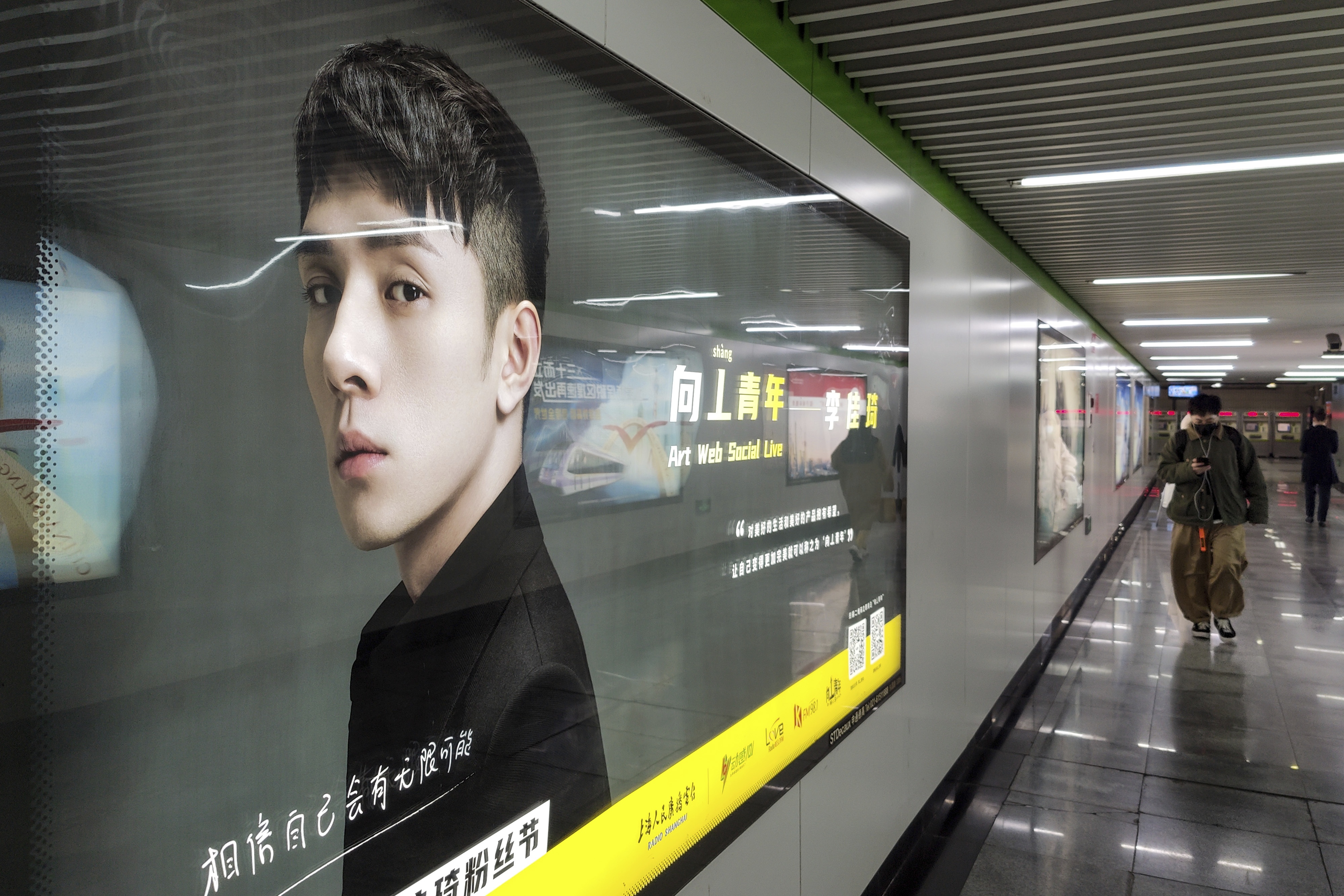How China’s biggest online influencers fell from their thrones
Three top livestreaming personalities on the platform Taobao commanded legions of fans who bought billions of dollars’ worth of goods—until they suddenly went dark.

No one had foreseen just how fast three of China’s most powerful influencers would fall.
On June 3, Austin Li, a 30-year-old livestreamer with over 60 million followers on the Alibaba-owned e-commerce platform Taobao, abruptly cut off a stream after a tank-shaped ice cream dessert appeared on the screen. While he later posted that it was due to “technical difficulties,” most people understand it as having triggered government censors, who interpreted it as a reference to the anniversary of the June 4 Tiananmen Square protests and massacre. Li isn’t known to have been arrested, and his account remains active, but he hasn’t streamed or posted on social media since that day. Fans and observers suspect he may not be allowed to stream again.
In China, livestreaming e-commerce is a massive industry worth over $180 billion. Combining QVC-style TV marketing with the live interaction and convenience made possible by smartphones, these streams drew in 388 million Chinese viewers in 2020. It took the industry half a decade to hit its peak, and influencers like Li have risen to rival the popularity of A-list celebrities in China. They’ve been endorsed by the central government as innovators and job creators, and they have been known to facilitate billions of dollars’ worth of online purchases in one night. Their status as retail rainmakers has given them immense power over sellers, including giant multinational corporations, influencing who gets featured and what prices should be.
But in Li’s and at least two other cases, these online empires were toppled overnight in what appears to be a government crackdown extending back to late 2021.
As 2021 was drawing to a close, Taobao’s most- and third-most-followed livestreaming influencers, Huang Wei (known as Viya online) and Zhu Chenhui (known as Cherie), were suddenly fined millions of dollars for tax evasion by a local tax authority in Hangzhou. Even after they each made public apologies, their Taobao accounts and other social media presence disappeared. They never livestreamed again.
Before that, influencers at their level were considered too big and too important for the tech platforms and the industry to turn against, but the harsh response suggested otherwise. The industry is still processing its aftermath. Austin Li, who survived the crackdown (he is said to have had clean tax records), was a major beneficiary of Huang and Zhu’s downfall, absorbing the traffic, attention, and business deals his peers left behind. That is, until this week.
The fall of these mega-influencers means a power reshuffle inside the industry, as the money and attention they commanded could now be diverted to smaller players. Taobao, the platform where most of these activities take place, also started a campaign in January 2022 to help small and midlevel influencers with cash rewards and traffic support.
And the events have changed the overall dynamics between influencers and brands. For one thing, the deep discounts that customers used to get through big-time influencers aren’t likely to remain if brands are making deals with livestreamers who have much smaller followings. And instead of relying on influencers’ huge reach, many brands are now building their own livestreaming channels. “This might be good news for brands, as customers might go to their self-operated live sessions,” says Jialu Shan, a research fellow at the Global Center for Digital Business Transformation, “but definitely bad news for customers, as they can’t enjoy the cheap deals which only livestreamers like Li and Viya can bring.”
The top influencers’ fate is also a clear signal that livestreaming e-commerce cannot escape government scrutiny. “Big-name celebrity KOLs (Key Opinion Leaders) have evolved into a huge business and are now essential in e-commerce. But along with multimillion-dollar paydays and high visibility comes the risks of microscopic scrutiny and social media blowback,” says Franklin Chu, the US managing director of marketing company Azoya International, which has worked with Austin Li in the past.
Along with tax responsibilities and content censorship, livestreaming e-commerce influencers are also dealing with increasing regulations that hold them accountable for things like product quality control, proper reporting of their sales numbers, and minors’ participation in livestreams. Since 2020, the government has released multiple regulatory documents that address different aspects of the business, putting the industry under close watch.
While influencers like Huang and Zhu have disappeared from the internet, their marketing and business teams are struggling to remain in the industry. Their assistants have become influencers themselves, claiming they are no longer involved with the companies that supported their celebrity former bosses, but Chinese media have reported that it’s pretty much still the same teams involved.
If that tank-shaped ice cream appearance does turn out to end Li’s career, this is probably what his company, Meione, will do too. But no statement has been made by his team, the tech platforms, or the regulator yet, leaving an anxious waiting game for millions of his fans. They won’t be the only ones rejoicing if he can return to his daily livestreams: the sellers and marketing agencies who have benefited from his popularity will join them. “Azoya has worked with him successfully in the past and likely would do so again, assuming there are no dramatic declines in his marketing effectiveness,” says Franklin Chu.
Deep Dive
Humans and technology
Building a more reliable supply chain
Rapidly advancing technologies are building the modern supply chain, making transparent, collaborative, and data-driven systems a reality.
Building a data-driven health-care ecosystem
Harnessing data to improve the equity, affordability, and quality of the health care system.
Let’s not make the same mistakes with AI that we made with social media
Social media’s unregulated evolution over the past decade holds a lot of lessons that apply directly to AI companies and technologies.
Stay connected
Get the latest updates from
MIT Technology Review
Discover special offers, top stories, upcoming events, and more.